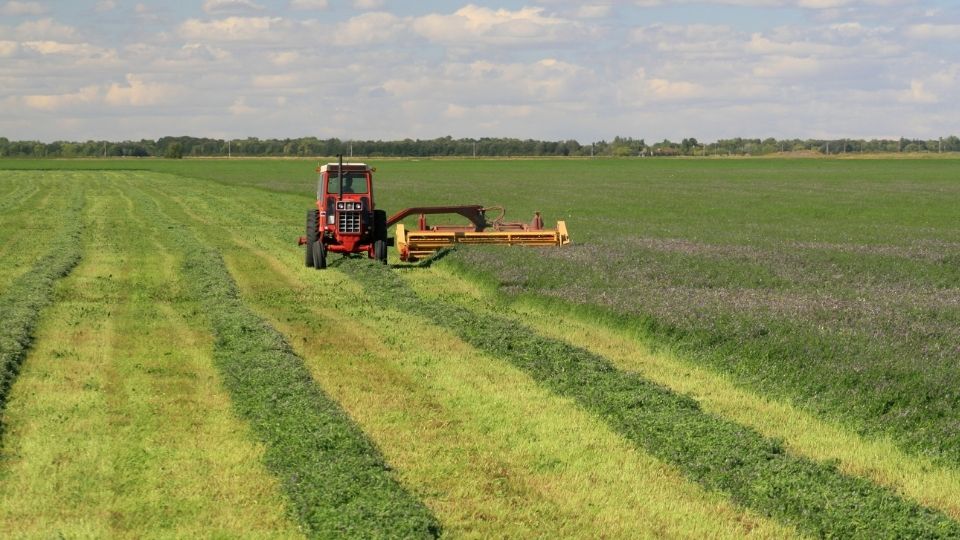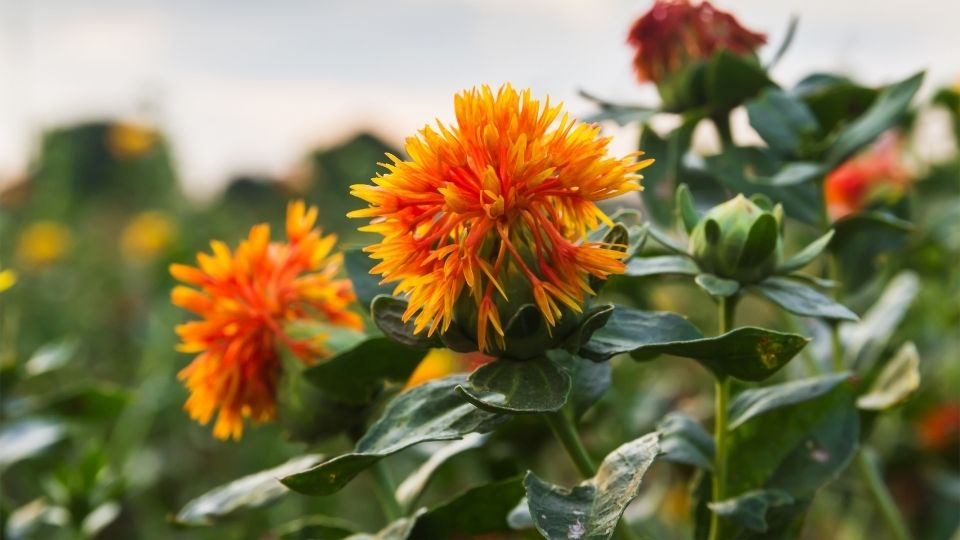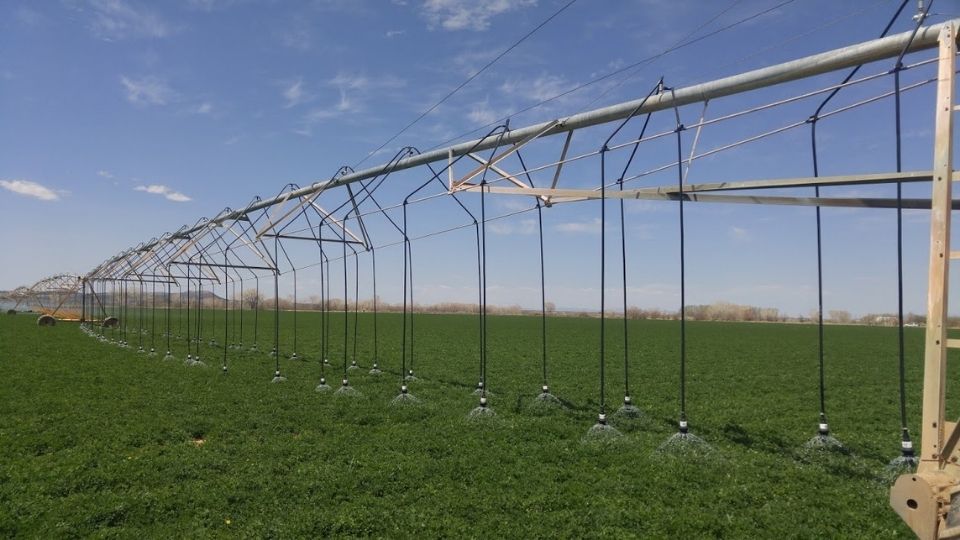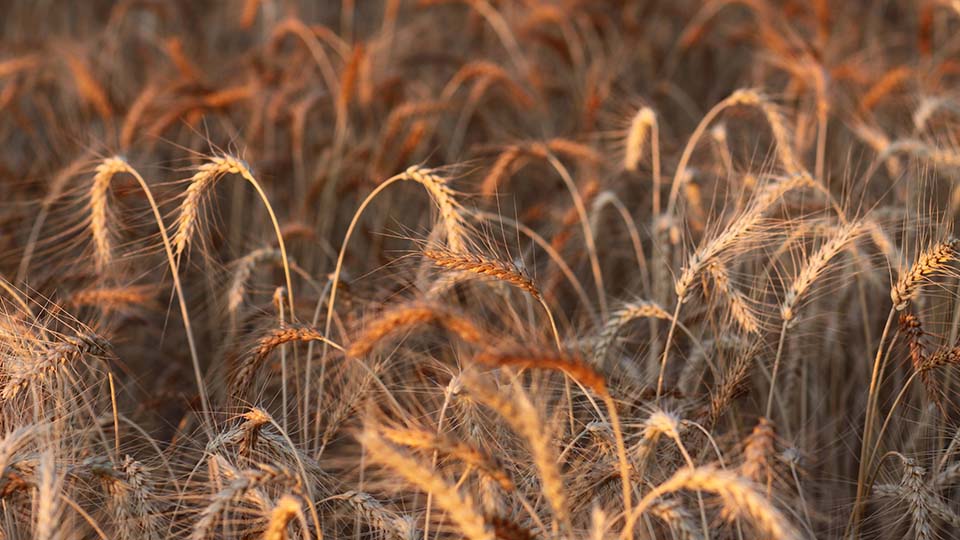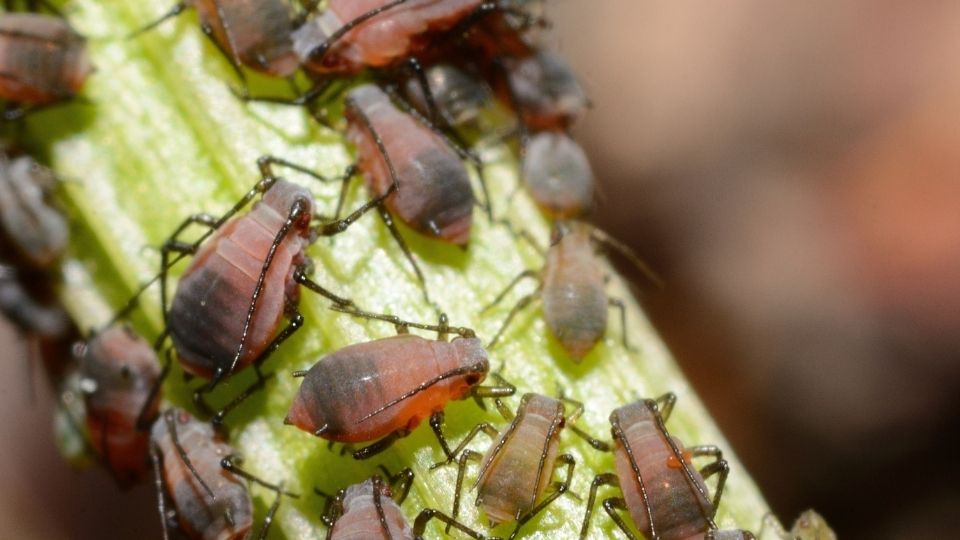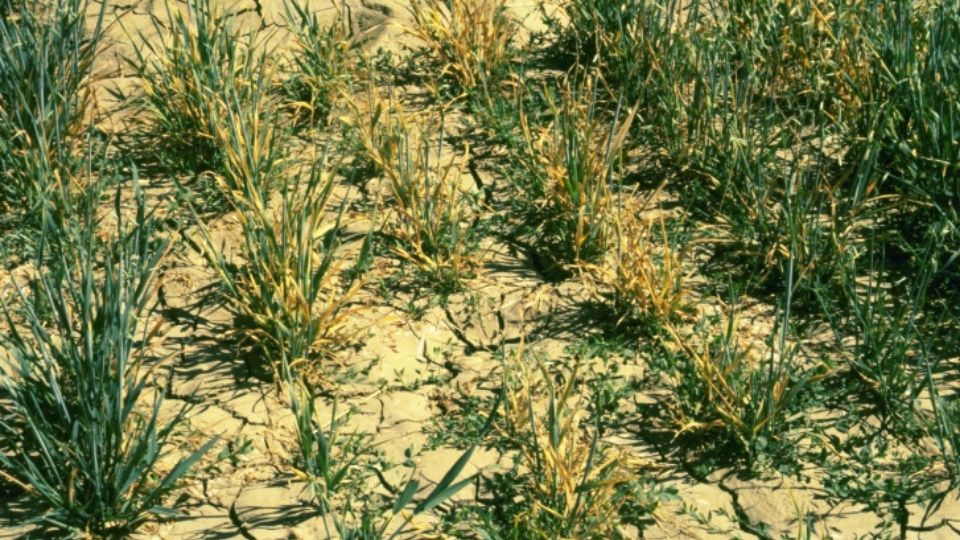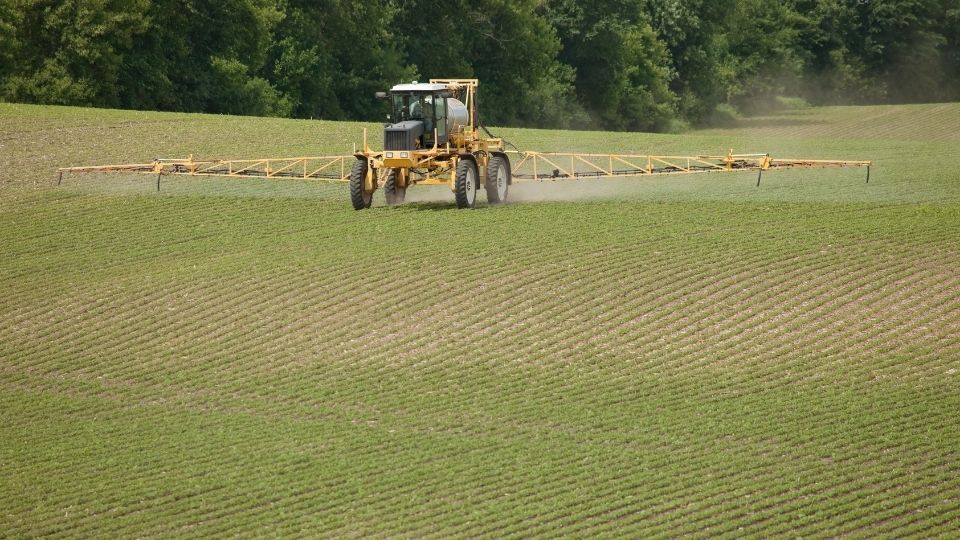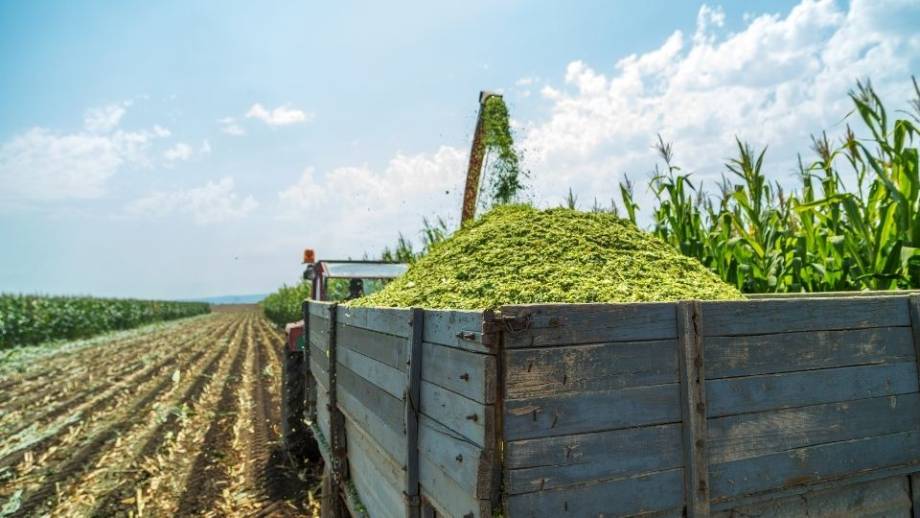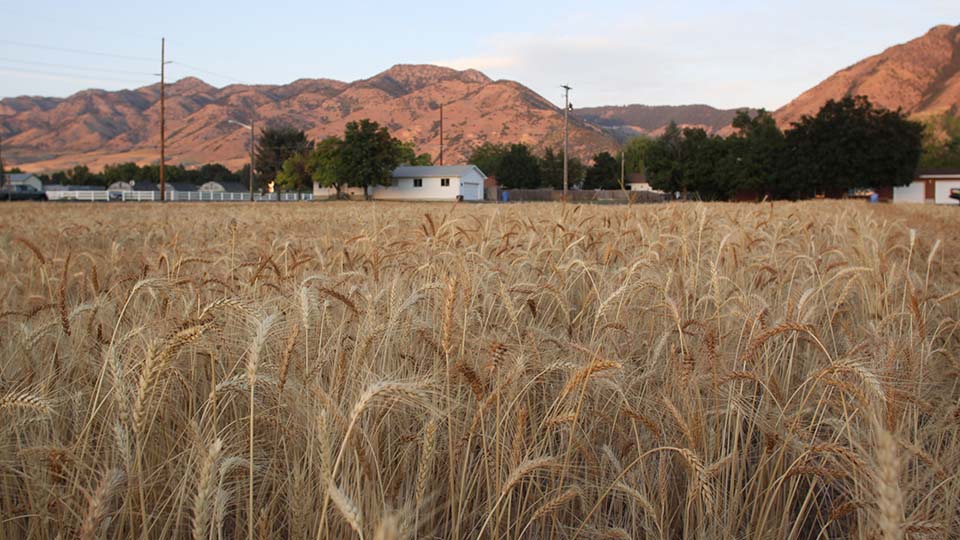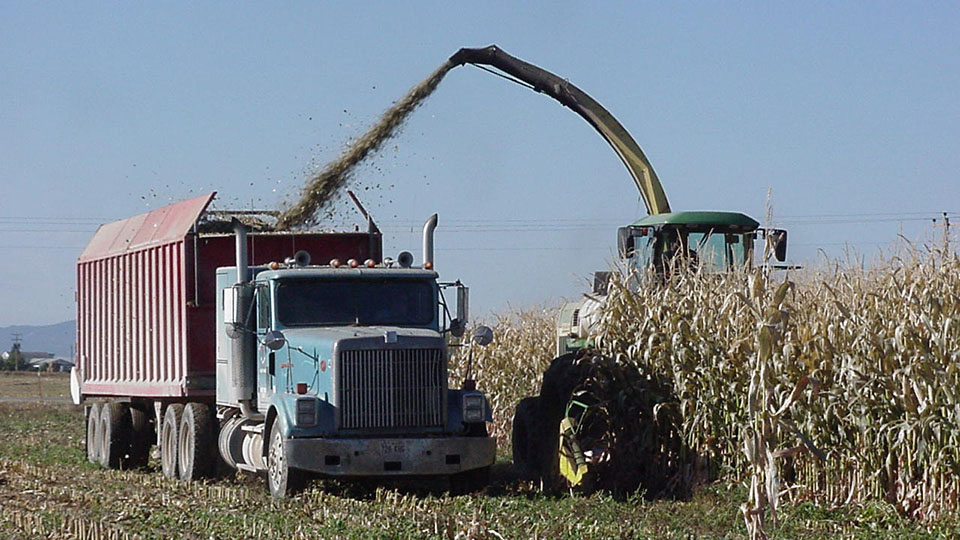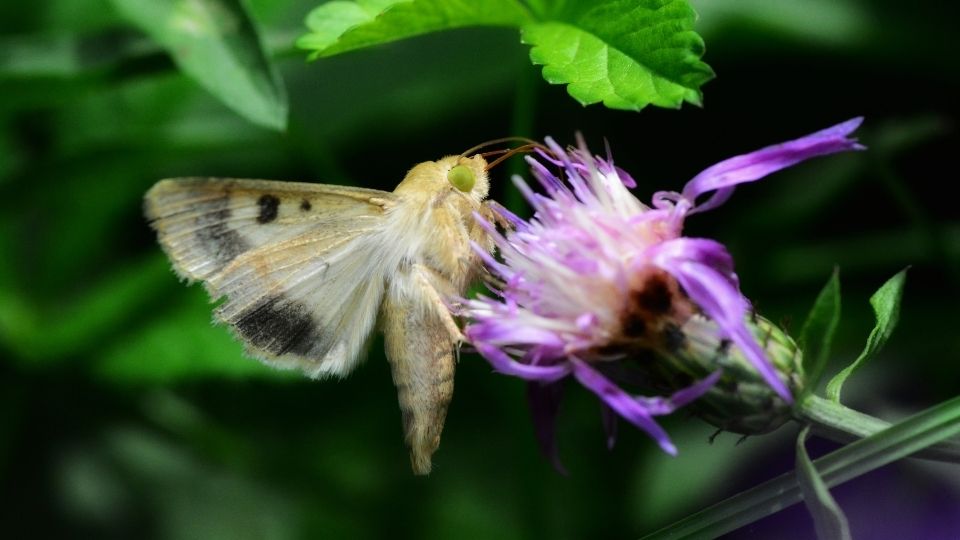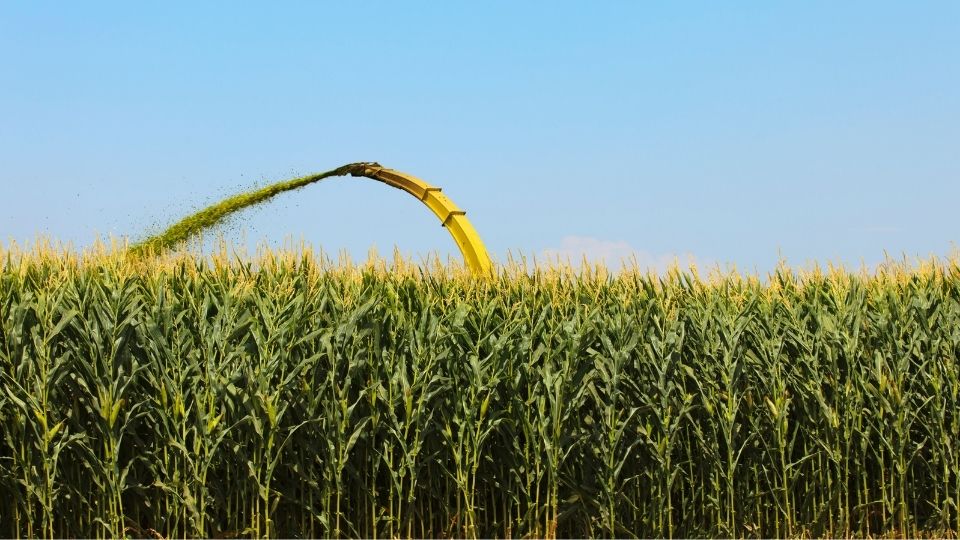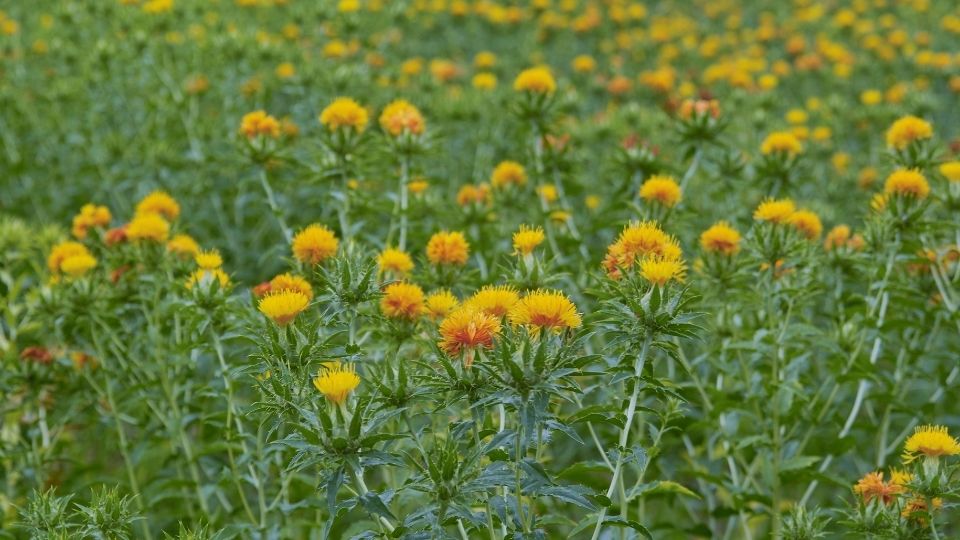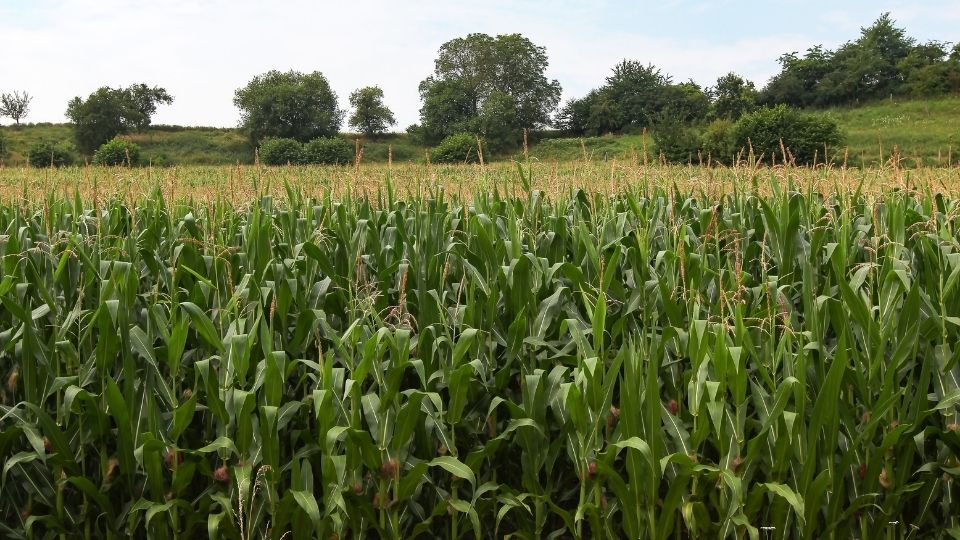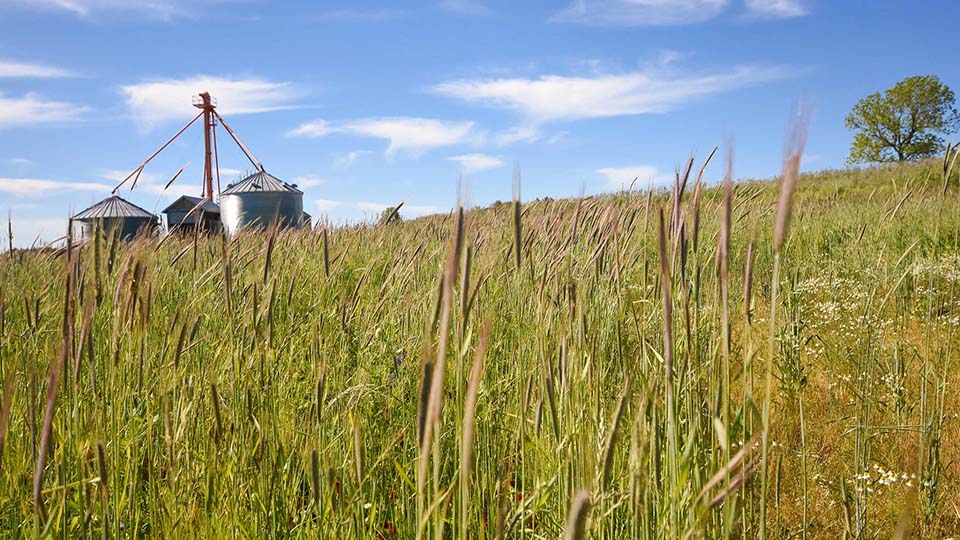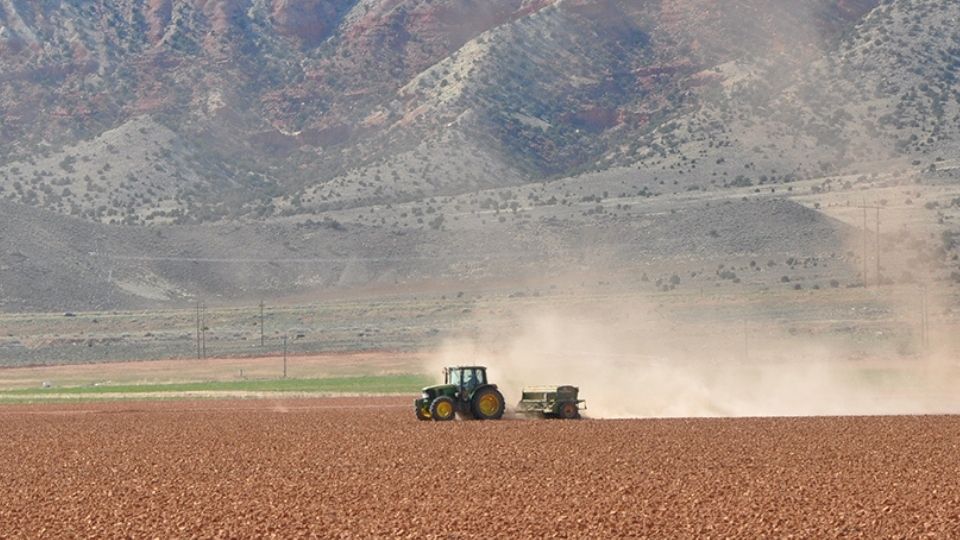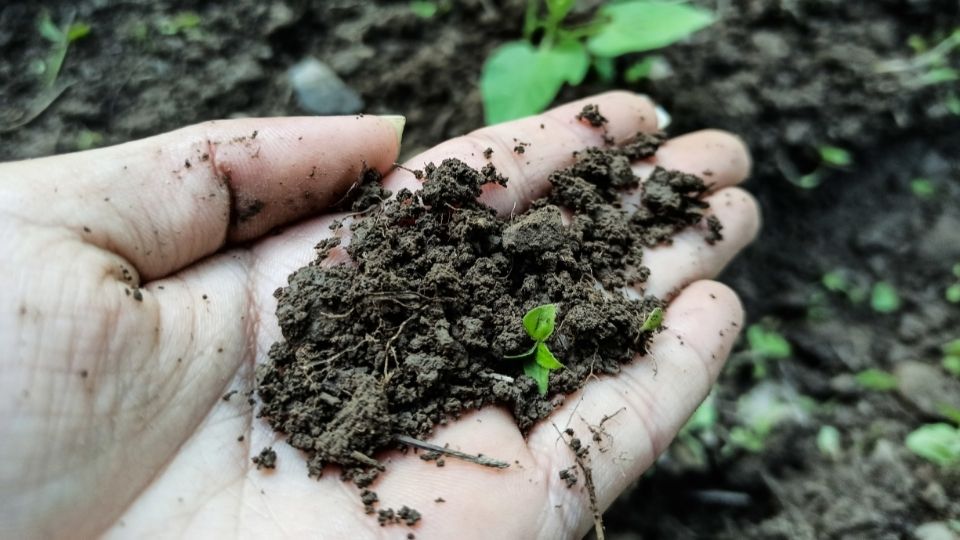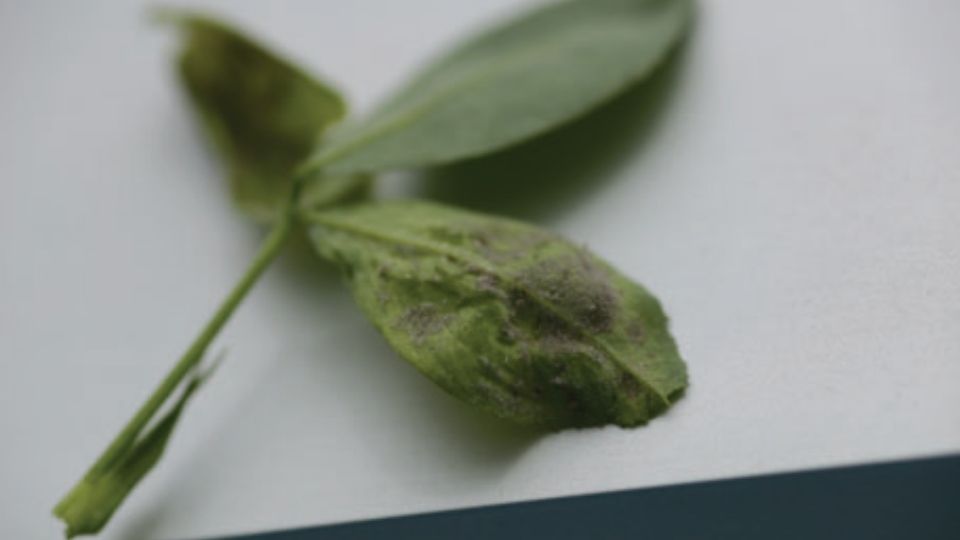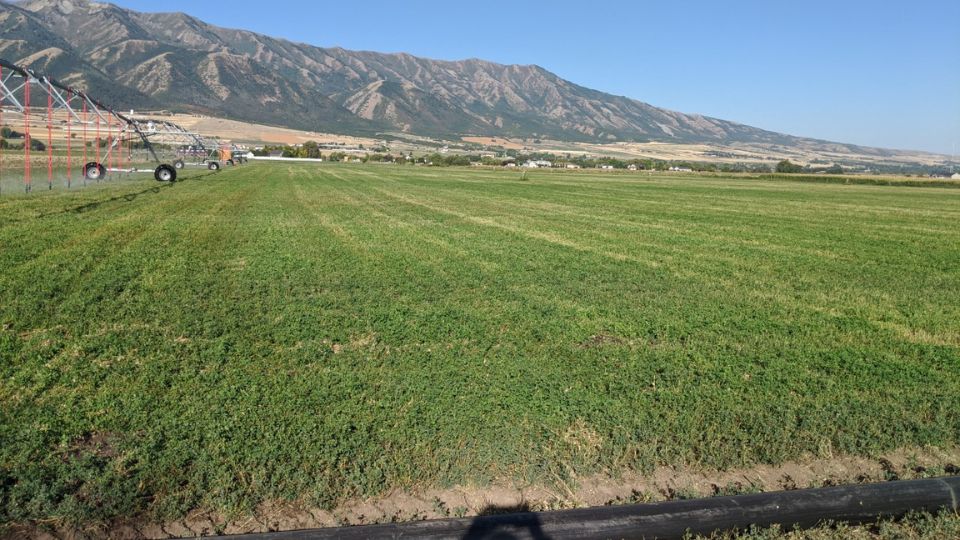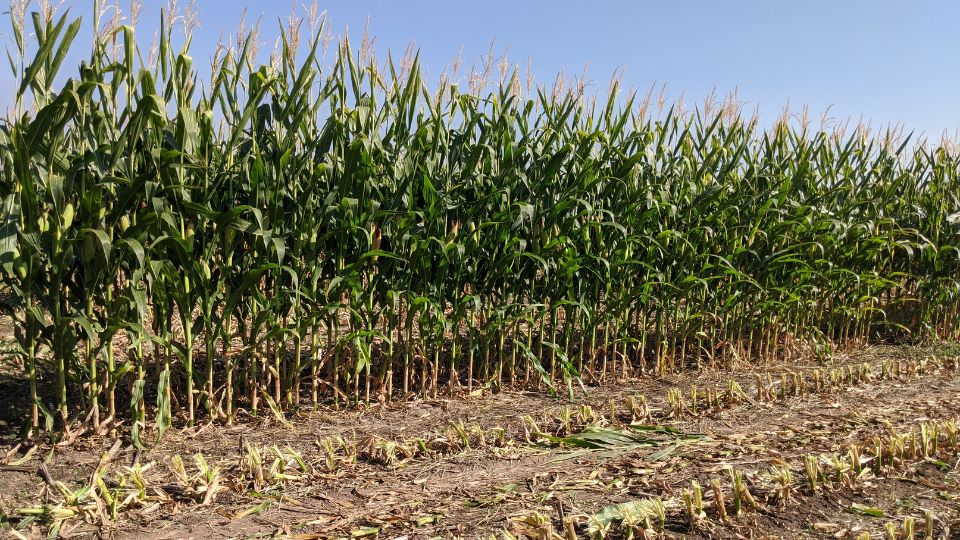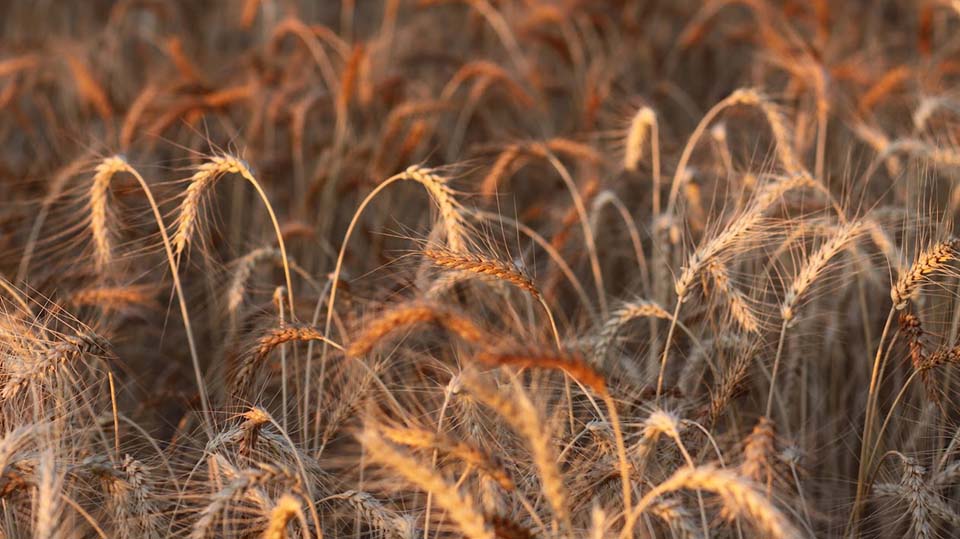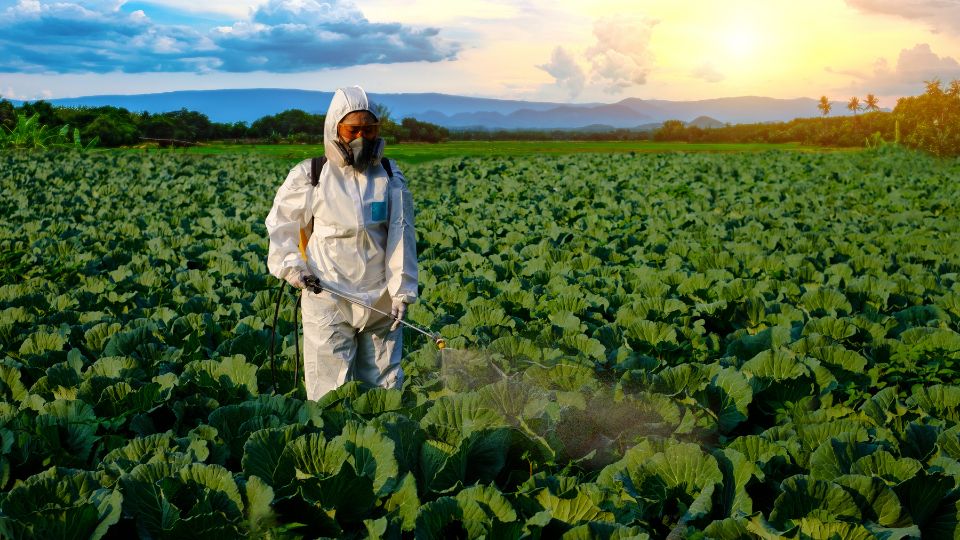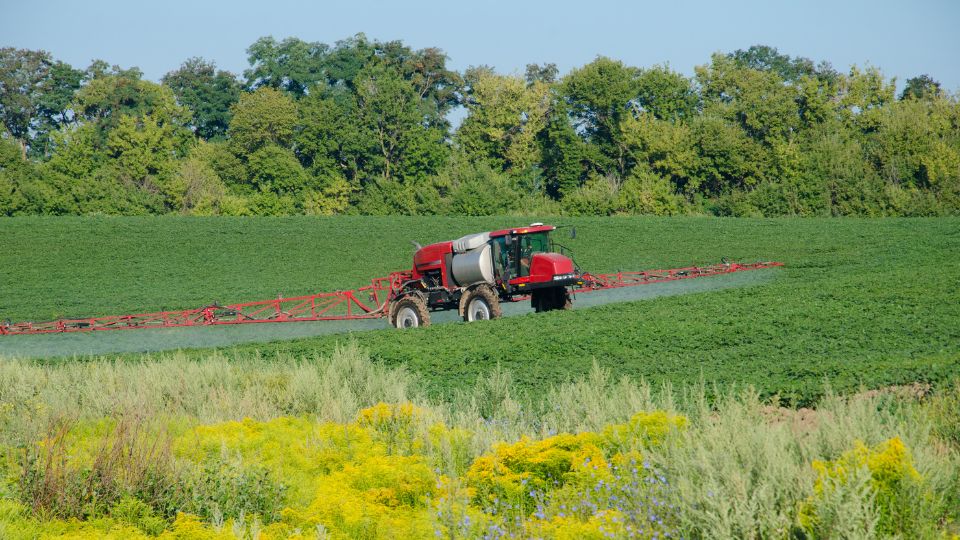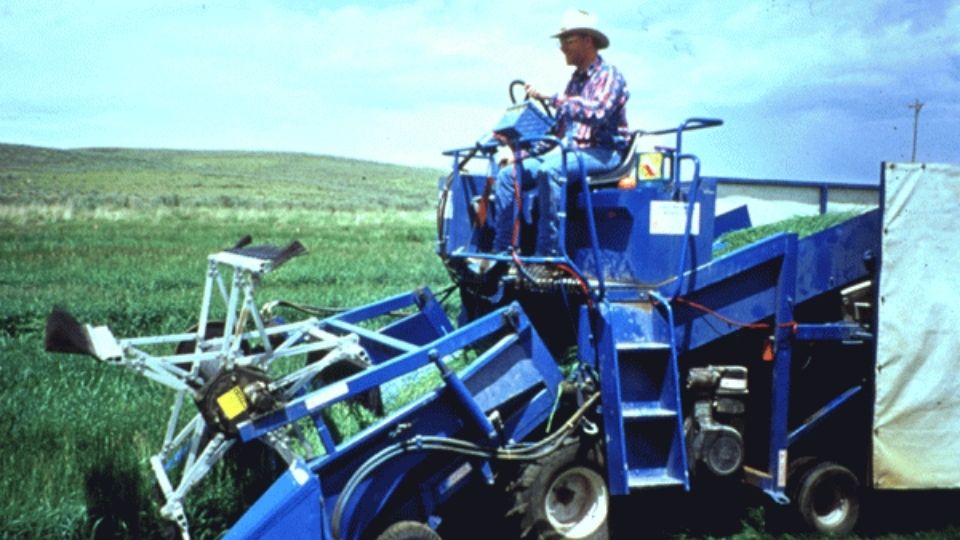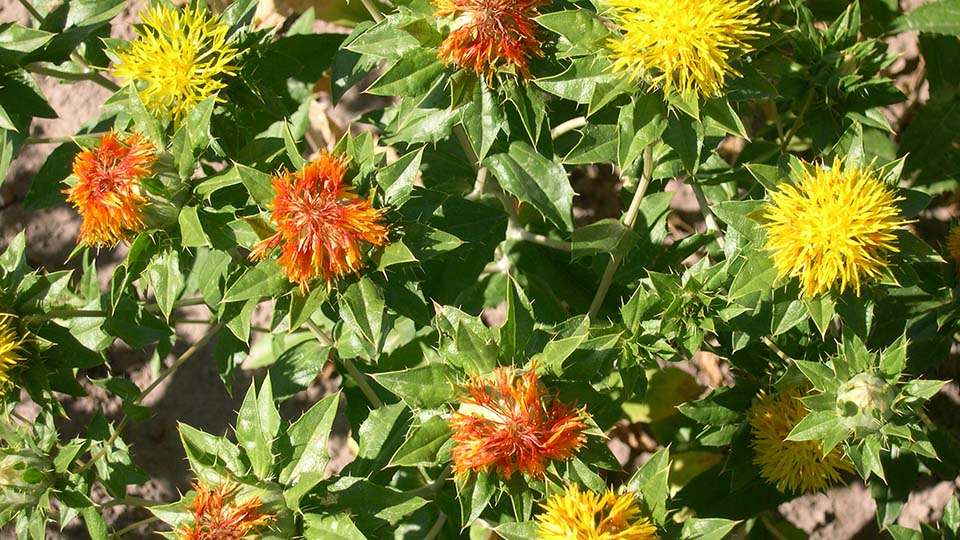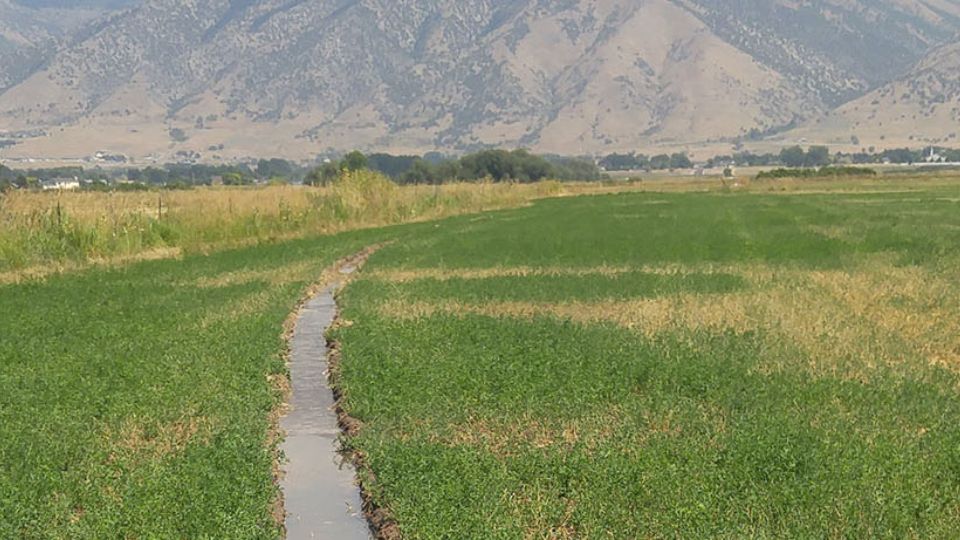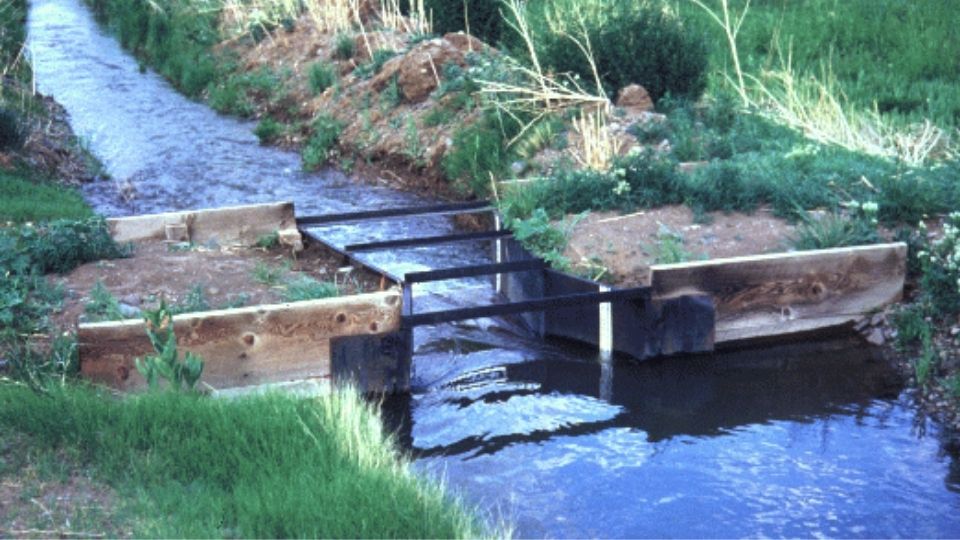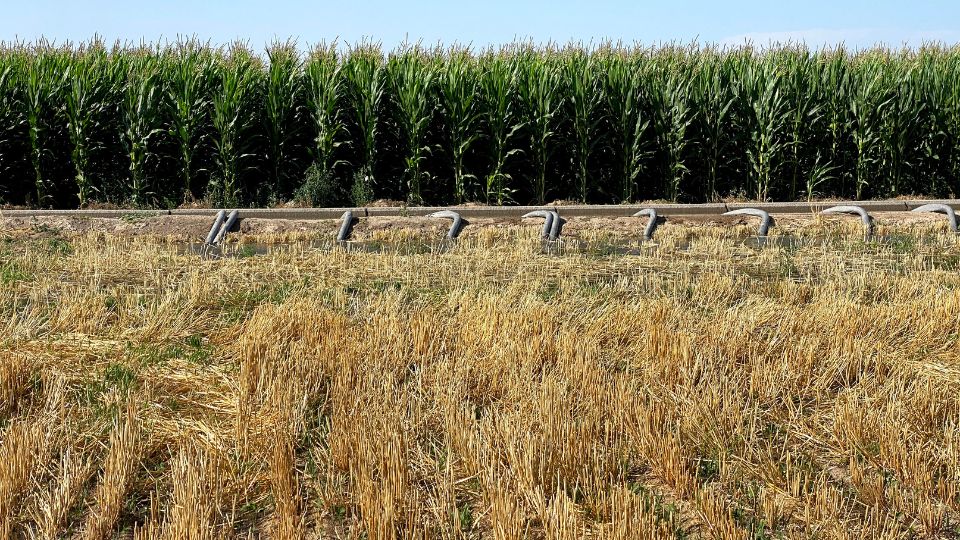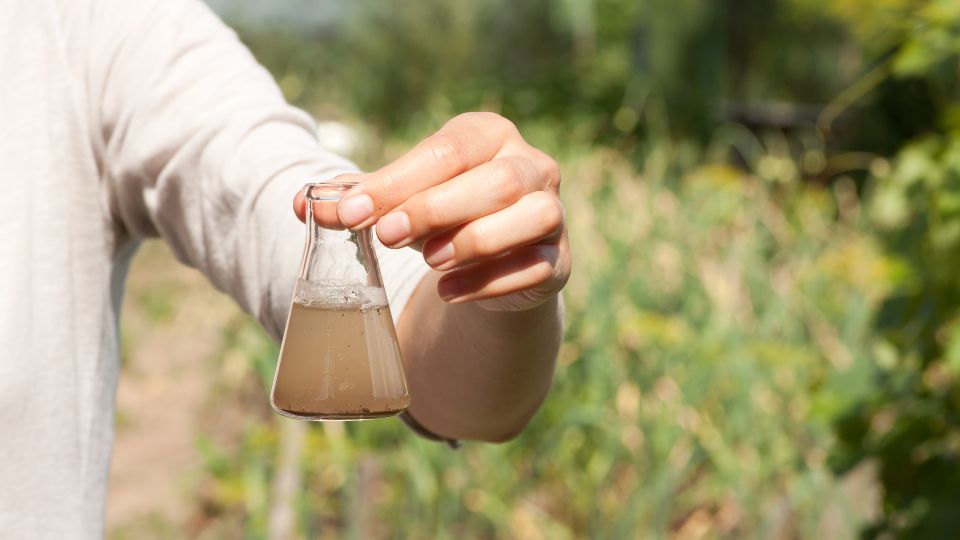Dwarf Bunt in Winter Wheat
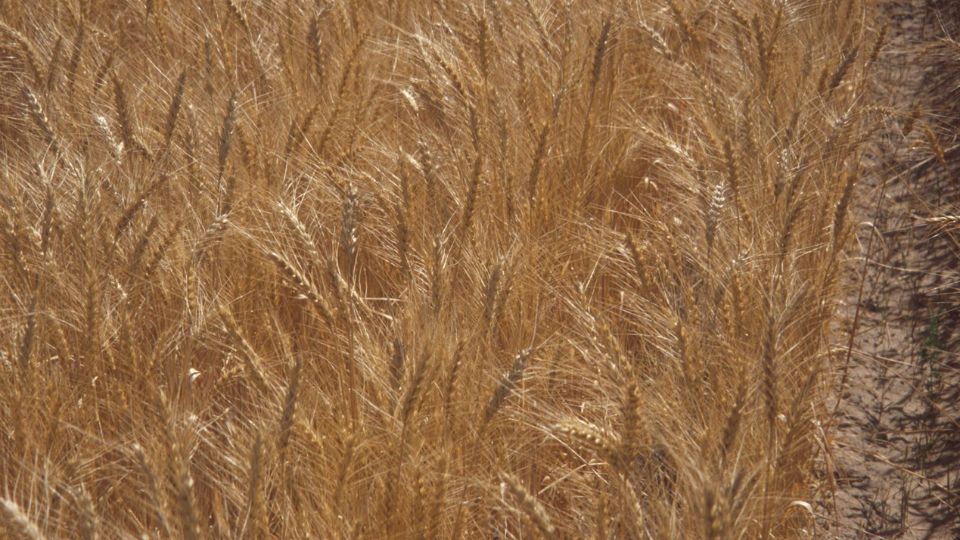
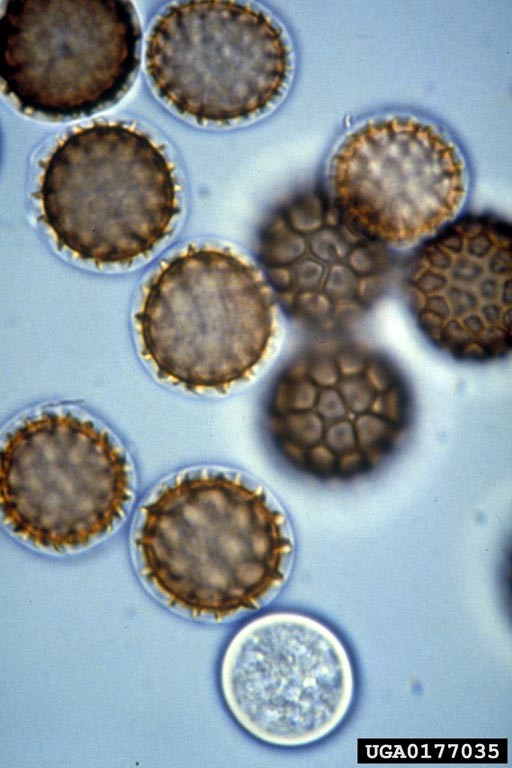
Dwarf bunt or stinking smut (Tilletia controversa Kühn, Figure 1) is a fungal disease that affects winter wheat (Triticum aestivum L.). The disease first appeared in Utah in the early 1930s in Cache County near the city of Paradise. The disease was soon found in Box Elder County near Hansel Valley. The outbreak of dwarf bunt became so severe that it affected other crops, such as barley. The impacts of this disease in 1932 affected an estimated 95% of a field near Logan, Utah (Figure 2). Researchers at Utah State University (USU) set out to find wheat varieties that were resistant to the fungus.
Small Grains Research
The USU Small Grains Program is the result of research for resistant varieties. The first variety released by the Utah Agriculture Experiment Station was ‘Relief’ in 1934 to replace ‘Ridit’ released by the Washington Agriculture Experiment Station in 1923 (Dalley, 1931). The variety ‘Cache’ was released in 1936 from the Utah Agriculture Experiment Station.
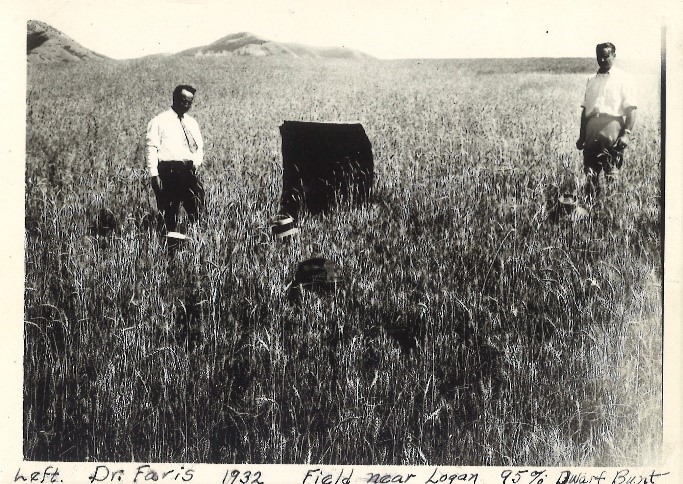
In 1976, Cache and Box Elder counties cut their first clean wheat in years (Woodward & Tingey, 1944). New cultivars of wheat resistant to dwarf bunt are still screened in the program today. The USU Small Grains Program is currently the only program in the United States screening for the disease and has become of more interest due to organic production. The program screens varieties from Idaho, Washington, Oregon, Turkey, and Austria.
Disease Sources
Disease outbreaks most commonly occur through soilborne inoculum, but infested seeds can also be a source of infection. The spores can persist in the soil for up to 10 years. A study at USU showed that spores survive passage through animals’ digestive tracts. Therefore, manure could be a potential inoculum source if cows or poultry have been fed infested grain (Smilanick et al., 1992). Seedling infection occurs during the winter when temperatures are around 41 ℉ to 50 ℉ for several weeks. Continued snow cover between December and February is the optimal condition for infection. Temperatures above 59 ℉ inhibit spore germination and infection.
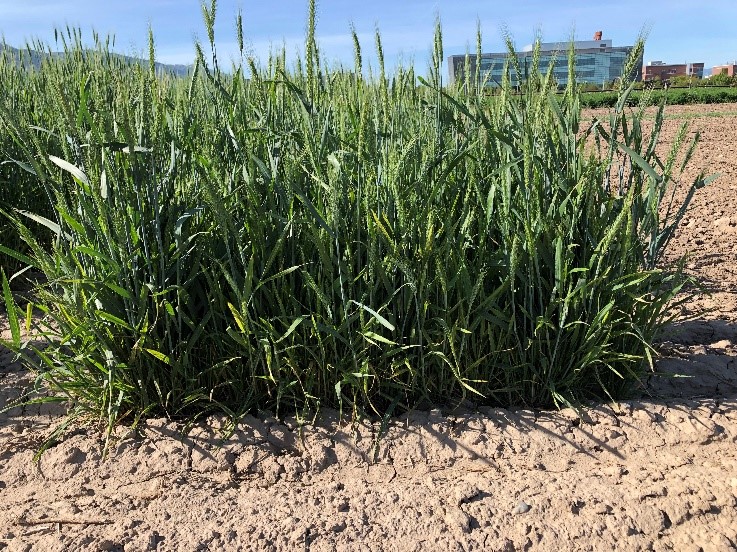
Disease Symptoms
Early spring symptoms are challenging to identify, such as an abnormally high amount of tillers and faint or distinct yellow spots or streaks appearing in leaves (Fuentes-Davilla et al., 2002). Symptoms are easiest to identify in the soft dough stage. The disease, as described in its name, can be identified by a 50% reduction or dwarfing in plant height (Figure 3). You can pinch the seed head and push out black dough (Figure 4). You may also find smutted heads at the normal height in nonresistant varieties. A fishlike smell from the dough is often present.
At full maturity, the kernel is replaced with a bunt ball which causes the glumes of the head to splay and looks ragged (Figure 5). In highly infected fields, one will notice a fishlike smell without needing to break open a kernel. At the hard dough stage, the bunt ball can be broken by hand and the smut is a powder consisting of spores. A combine can spread the powder in the bunt ball in the field during harvest (Figure 6).
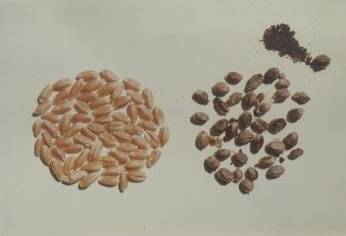
Treatment
Chemical seed treatments used to control other smuts are not active long enough during the winter to prevent dwarf bunt infection. Products containing difenoconazole have proven to be the most effective seed treatment. Without chemical seed treatment, using resistant varieties and preventing pathogen introduction through manure or on contaminated equipment are the only means to control the disease.
Resistant Varieties
Like wheat, dwarf bunt has genes and is capable of hybridization and mutating and developing new races. As organic production of winter wheat increases, selecting resistant varieties will become of greater importance to prevent crop losses. Due to the treatment cost and the small returns on production, it is not practical to treat seed that is used for large sections of dryland wheat production in Utah. Therefore, dryland producers typically seek out resistant varieties.
Varieties that have been tested for dwarf bunt resistance can be located on the following websites:
- Utah State Small Grains Research provides results for Utah: www.wheat.usu.edu.
- South Central and Southeast Idaho Cereals Program from the University of Idaho teaches, in Idaho, about results that have been tested at USU: www.uidaho.edu/extension/cereals/scseidaho.
- Utah Certified Seed, from the Utah Crop Improvement Association at USU can help locate available certified or registered seed: http://www.utahcrop.org.
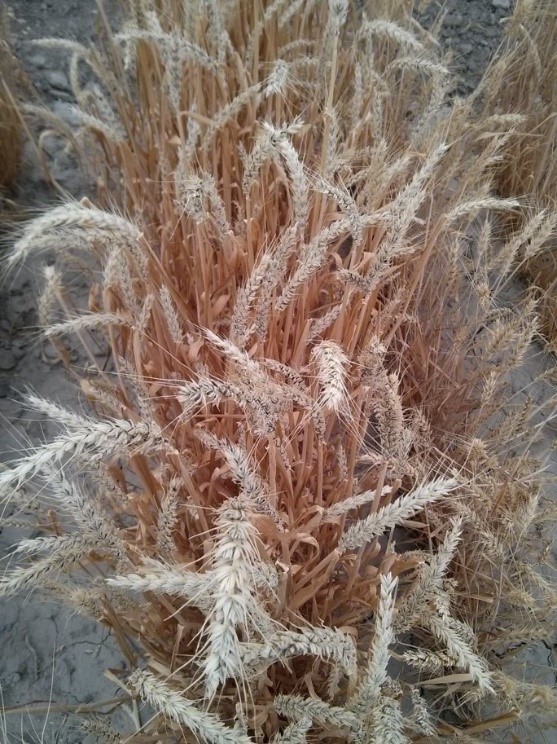
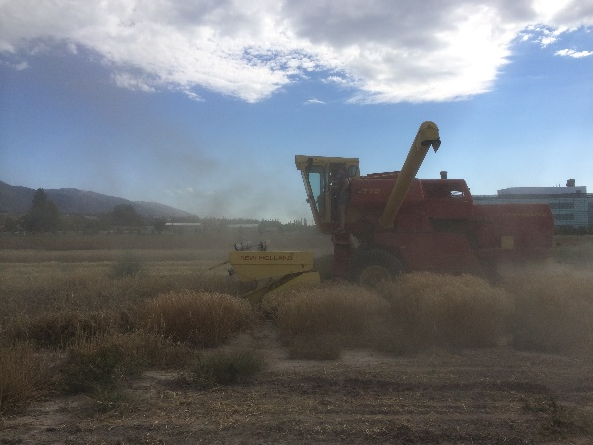
Photo Credit
All photos are by Justin Clawson unless otherwise noted.
References
- Dalley L. C. (1931). Inheritance in a wheat cross of Ridit and UTAC [Master’s thesis, Utah State University]. All Graduate Theses and Dissertations. 1558. Inheritance in a Wheat Cross of Ridit x Utac (usu.edu)
- Fuentes-Davilla, G., Goates, B. J., Thomas, P., Nielsen, J., Ballantyne, B. (2002). Smut diseases. In B. C. Curtis, S. Rajaram, & H. Gomez Machperson (Eds.), Bread wheat improvement and production. Food and Agriculture Organization of the United Nations. https://www.fao.org/3/Y4011E/y4011e00.htm#Contents
- Smilanick, J. L., Hartsell, P. L., Denis-Arrue, R., Henson, D. J., McKinney, J. D., Tebbets, J. C., & Goates, B. J. (1992). Survival of common and dwarf bunt teliospores and intact sori after fumigation of high and low moisture content winter wheat. Plant Disease, 76, 293–296.
- Woodward, R. W. & Tingey, D. C. (1932). Annual report. Division of Cereal Crops and Diseases Bureau of Plant Industry, U. S. Department of Agriculture, in cooperation with the Utah Agricultural Experiment Station.
- Woodward, R. W., & Tingey, D. C. (1944). Cache: A beardless smut-resistant winter wheat [Bulletin No. 312]. Utah Agricultural Experiment Station (UAES) Bulletins. Paper 274. https://digitalcommons.usu.edu/uaes_bulletins/274
Published January 2023
Utah State University Extension
Peer-reviewed fact sheet
Authors
Justin Clawson, Claudia Nischwitz, Margaret Krause, and Will Krause
Related Research


